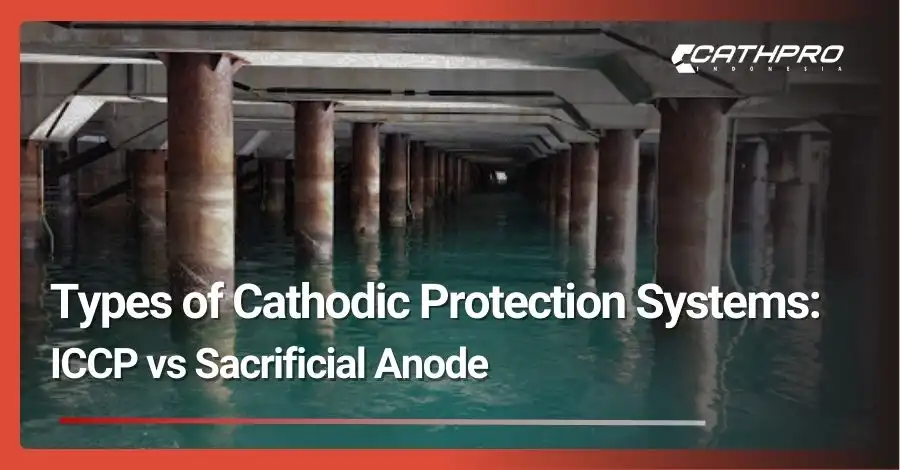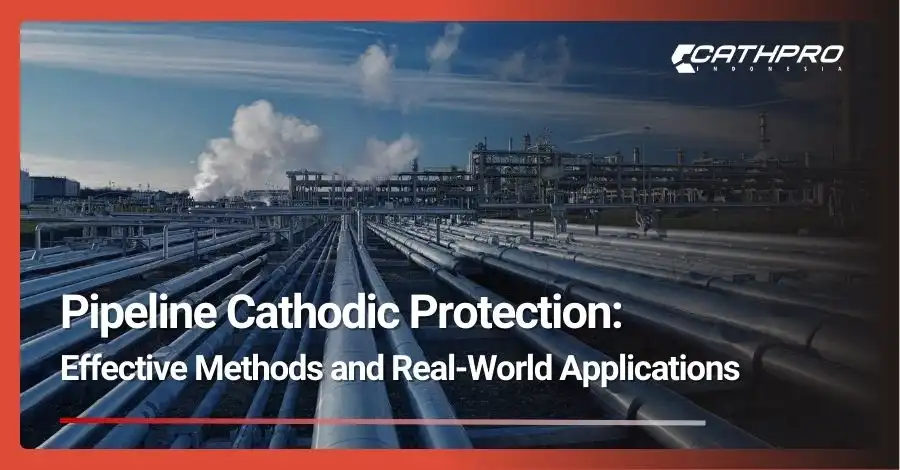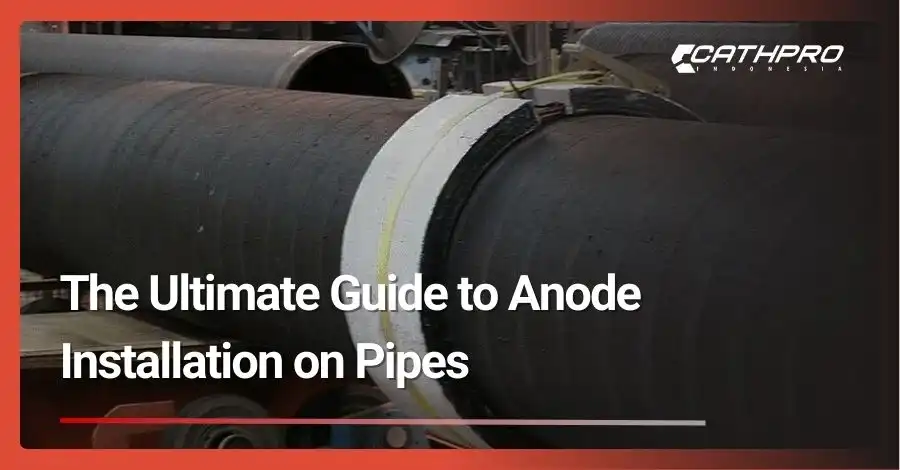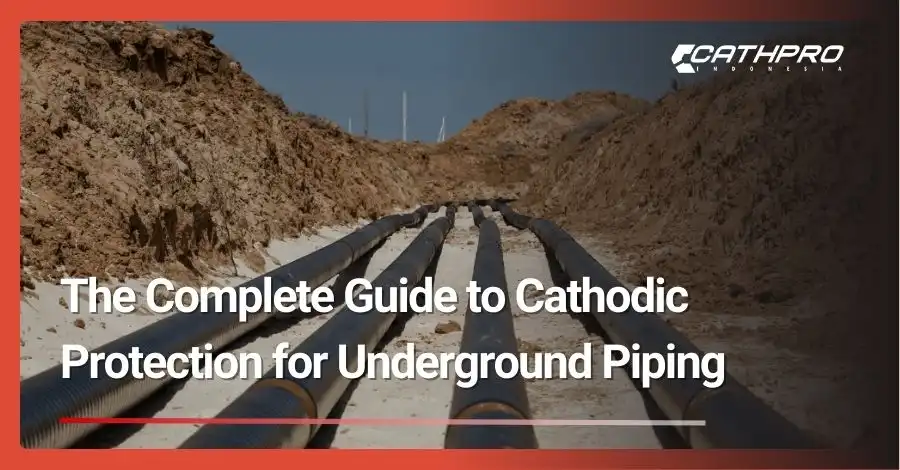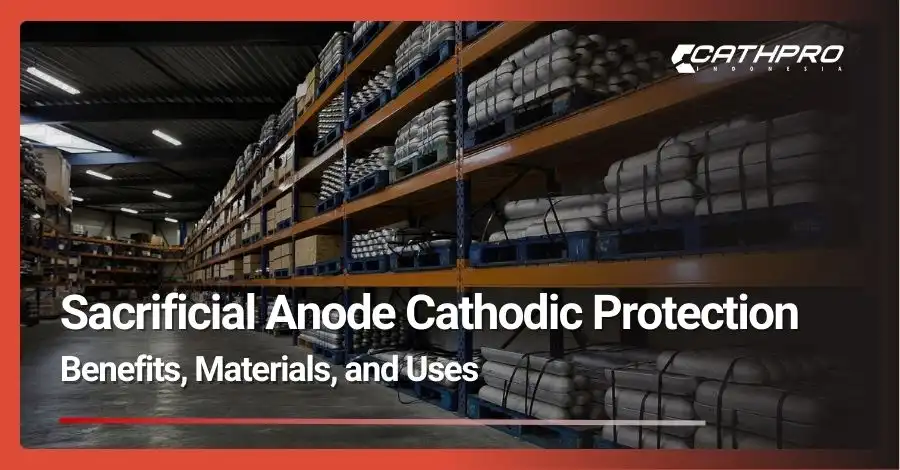When it comes to protecting metal structures from corrosion, understanding the different types of cathodic protection systems available can save millions in maintenance costs and extend asset lifespans by decades.
Whether you’re managing offshore platforms, underground pipelines, or marine vessels, choosing between Impressed Current Cathodic Protection (ICCP) and Sacrificial Anode systems isn’t just a technical decision—it’s a strategic investment in your infrastructure’s future.
Introduction to Cathodic Protection Methods
Cathodic protection represents one of the most effective corrosion protection solutions available today. By making a metal structure the cathode of an electrochemical cell, this technology prevents the oxidation process that causes rust and deterioration. Think of it as giving your metal assets an invisible shield against nature’s relentless attack.
The science behind cathodic protection methods relies on controlling the electrical potential of protected structures. When properly implemented, these systems can reduce corrosion rates by over 95%, transforming maintenance schedules from reactive firefighting to predictable, manageable programs. Two primary approaches dominate the industry: sacrificial anode systems and impressed current systems, each with distinct advantages depending on your specific application.
Sacrificial Anode Cathodic Protection (SACP)
How Sacrificial Anodes Work
Among the types of cathodic protection systems, sacrificial anode protection stands out for its elegant simplicity. These systems employ metals with more negative electrochemical potential than the structure being protected. When connected, the anode material corrodes preferentially, sacrificing itself to protect your valuable assets.
The electrochemical reaction occurs naturally without external power sources. As the anode dissolves, it releases electrons that flow to the cathode (your protected structure), maintaining a protective current that prevents corrosion. This self-regulating process continues until the anode material depletes, typically over several years depending on environmental conditions.
Common Materials (Zinc, Aluminum, Magnesium)
Material selection plays a crucial role in system effectiveness. Zinc anodes excel in seawater applications, offering consistent performance at temperatures below 50°C. Their predictable consumption rates make them ideal for ship hulls and harbor structures where replacement schedules matter.
Aluminum anodes deliver superior efficiency in brackish and seawater environments. With higher driving voltage than zinc and lighter weight, they’re increasingly popular for offshore installations. Magnesium anodes, despite their higher cost, provide maximum driving voltage, making them perfect for freshwater applications and high-resistivity soils where other materials struggle to generate sufficient current.
Advantages and Limitations
Sacrificial anode systems offer compelling benefits. Installation requires no external power, reducing complexity and eliminating utility costs. Their self-regulating nature prevents overprotection, and maintenance involves simple visual inspections. The initial capital investment remains relatively low, making them attractive for smaller projects.
However, limitations exist. Current output depends on environmental resistivity, potentially restricting effectiveness in certain conditions. Regular replacement becomes necessary as anodes consume, creating ongoing material costs. In high-current-demand situations, the required anode mass might become impractical.
Typical Applications (Pipelines, Ships, Tanks)
Pipeline cathodic protection using sacrificial anodes proves particularly effective for smaller diameter pipes and well-coated systems. Marine vessels rely heavily on zinc or aluminum anodes for hull protection, with strategic placement around propellers and rudders. Storage tanks, both above and below ground, benefit from magnesium anodes in soil applications or aluminum anodes for internal protection.
Water heaters represent another common application, where magnesium rods protect against aggressive water chemistry. Small offshore structures and jetties often employ sacrificial systems due to their reliability and minimal maintenance requirements in accessible locations.
Impressed Current Cathodic Protection (ICCP)
How ICCP Works
ICCP represents the more sophisticated of the two main types of cathodic protection systems. Unlike sacrificial anodes, ICCP systems use an external DC power source to drive protective current from relatively inert anodes to the structure. This controlled approach allows precise adjustment of protection levels based on changing conditions.
The system converts AC power to DC through transformer-rectifiers, delivering consistent current regardless of environmental resistivity. Modern installations incorporate sophisticated monitoring systems that automatically adjust output based on structure-to-electrolyte potential measurements, ensuring optimal protection while minimizing power consumption.
Key Components (Anodes, Rectifier, Monitoring System)
The transformer-rectifier unit serves as the system’s heart, converting available AC power to controlled DC output. These units range from simple manual-control models to sophisticated automatic systems with remote monitoring capabilities. Proper sizing ensures adequate current capacity while maintaining efficiency.
ICCP anodes utilize materials like mixed metal oxide, graphite, or platinum-coated titanium. These materials resist consumption, lasting decades rather than years. Reference electrodes continuously monitor protection levels, feeding data to control systems that optimize performance. Cable networks distribute current effectively, with careful design preventing stray current interference with nearby structures.
Advantages and Limitations
ICCP systems excel in challenging environments where sacrificial anodes fall short. Unlimited current capacity allows protection of large structures, while adjustable output accommodates changing conditions. Long anode life reduces replacement frequency, and remote monitoring enables predictive maintenance strategies.
Yet complexity brings challenges. Initial installation costs exceed sacrificial systems significantly. Continuous power requirements create ongoing operational expenses. System failures can occur from power outages or equipment malfunction, demanding backup provisions for critical assets. Professional expertise becomes essential for design, installation, and maintenance.
Typical Applications (Offshore Platforms, Large Pipelines, Marine Vessels)
Offshore platforms rely extensively on ICCP for submerged structural protection. The ability to adjust current output compensates for coating degradation over time, extending service life beyond original design parameters. Large-diameter pipeline cathodic protection systems benefit from ICCP’s ability to protect extensive networks from centralized locations.
Marine vessels increasingly adopt ICCP for superior hull protection with minimal drag. Port facilities, including sheet pile walls and concrete structures with embedded steel, utilize ICCP to overcome high current demands. Bridge substructures in aggressive environments demonstrate ICCP’s versatility in protecting complex geometries.
Cathodic Protection System Comparison: ICCP vs Sacrificial Anode
Understanding the cathodic protection system comparison between these technologies helps optimize selection for specific applications. Cost analysis reveals sacrificial systems offer lower initial investment but higher long-term material costs. ICCP demands substantial upfront capital but provides lower operational costs over extended periods.
Maintenance requirements differ significantly. Sacrificial systems need periodic anode replacement but minimal technical expertise. ICCP systems require specialized maintenance of electrical components but less frequent physical intervention. System lifespan varies from 5-15 years for sacrificial anodes to 20-30 years for ICCP installations.
Effectiveness depends heavily on application specifics. Sacrificial anodes excel in well-coated, smaller structures with predictable environments. ICCP dominates in variable conditions, poorly coated structures, or where high current demand exists. Hybrid approaches combining both technologies increasingly provide optimized corrosion protection solutions for complex projects.
Read also : Corrosion Control System Installation: Best Practices for Long-Term Protection
How to Choose the Right Cathodic Protection System
Selecting appropriate cathodic protection methods requires careful evaluation of multiple factors. Structure size and geometry influence current distribution requirements. Environmental conditions, including soil or water resistivity, affect system performance. Budget constraints must balance initial costs against lifecycle expenses.
Professional assessment proves invaluable in system selection. Experienced engineers evaluate coating quality, calculate current requirements, and model potential distributions. They consider future expansion possibilities and integration with existing infrastructure. Environmental regulations and safety requirements further influence design decisions.
Modern approaches often combine cathodic protection with high-performance coatings, creating synergistic protection strategies. This hybrid philosophy reduces current demand while providing redundant protection mechanisms. Smart monitoring systems enable predictive maintenance, maximizing asset protection while minimizing operational costs.
Conclusion
The choice between different types of cathodic protection systems ultimately depends on your specific application requirements, environmental conditions, and economic considerations. Sacrificial anode systems offer simplicity and reliability for smaller, well-defined applications, while ICCP provides flexibility and power for large-scale or challenging environments. Both technologies play crucial roles in modern corrosion protection solutions, often working together in complementary configurations.
Understanding these fundamental differences empowers better decision-making, but professional expertise remains essential for optimal system design and implementation. Whether protecting critical pipeline infrastructure, marine assets, or industrial facilities, the right cathodic protection strategy can extend asset life by decades while significantly reducing maintenance costs.
Ready to protect your valuable assets from corrosion? Contact our team of cathodic protection specialists today for a tailored assessment of your corrosion protection needs. We’ll help you select and implement the ideal system for maximum protection and value.

